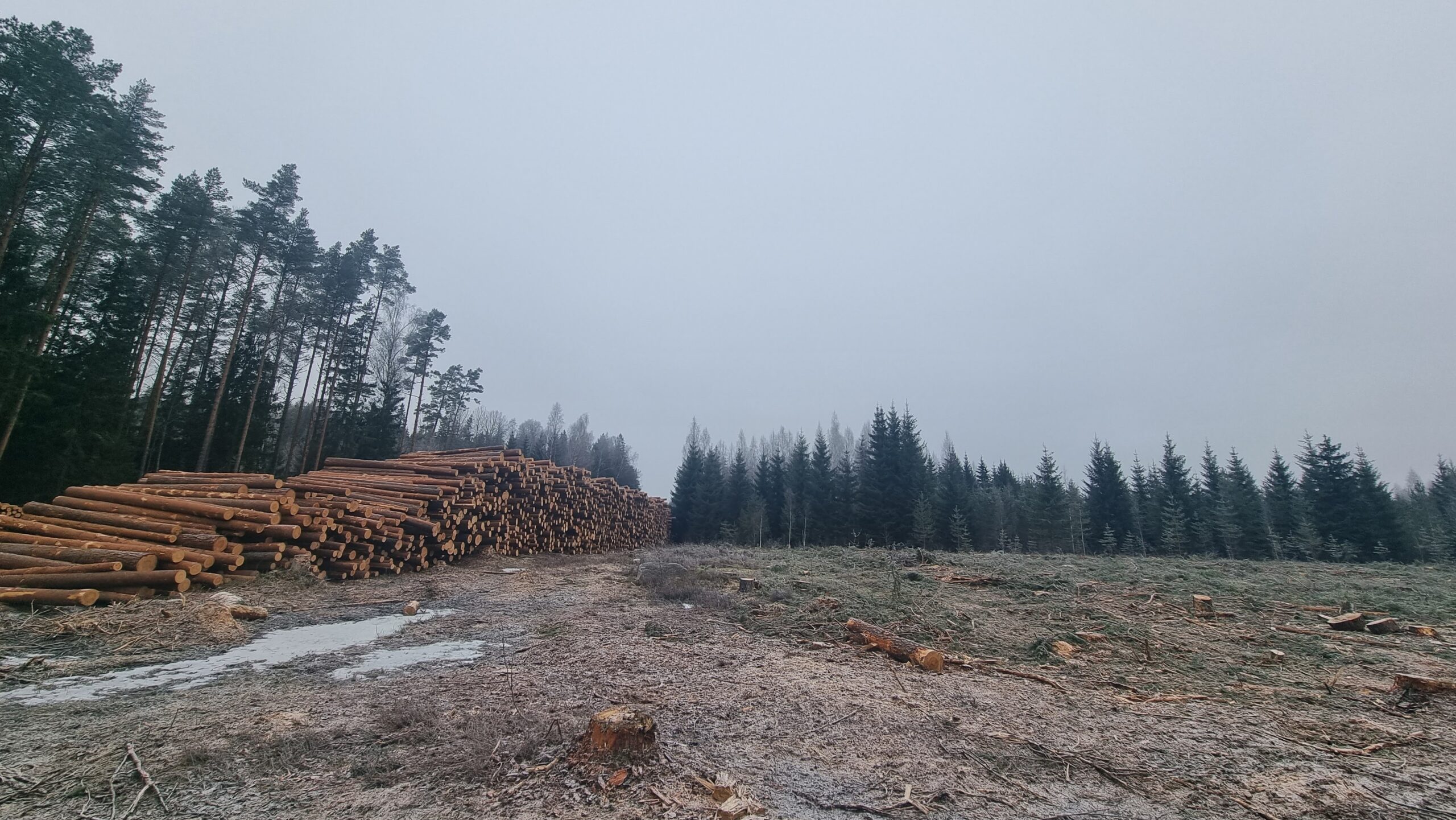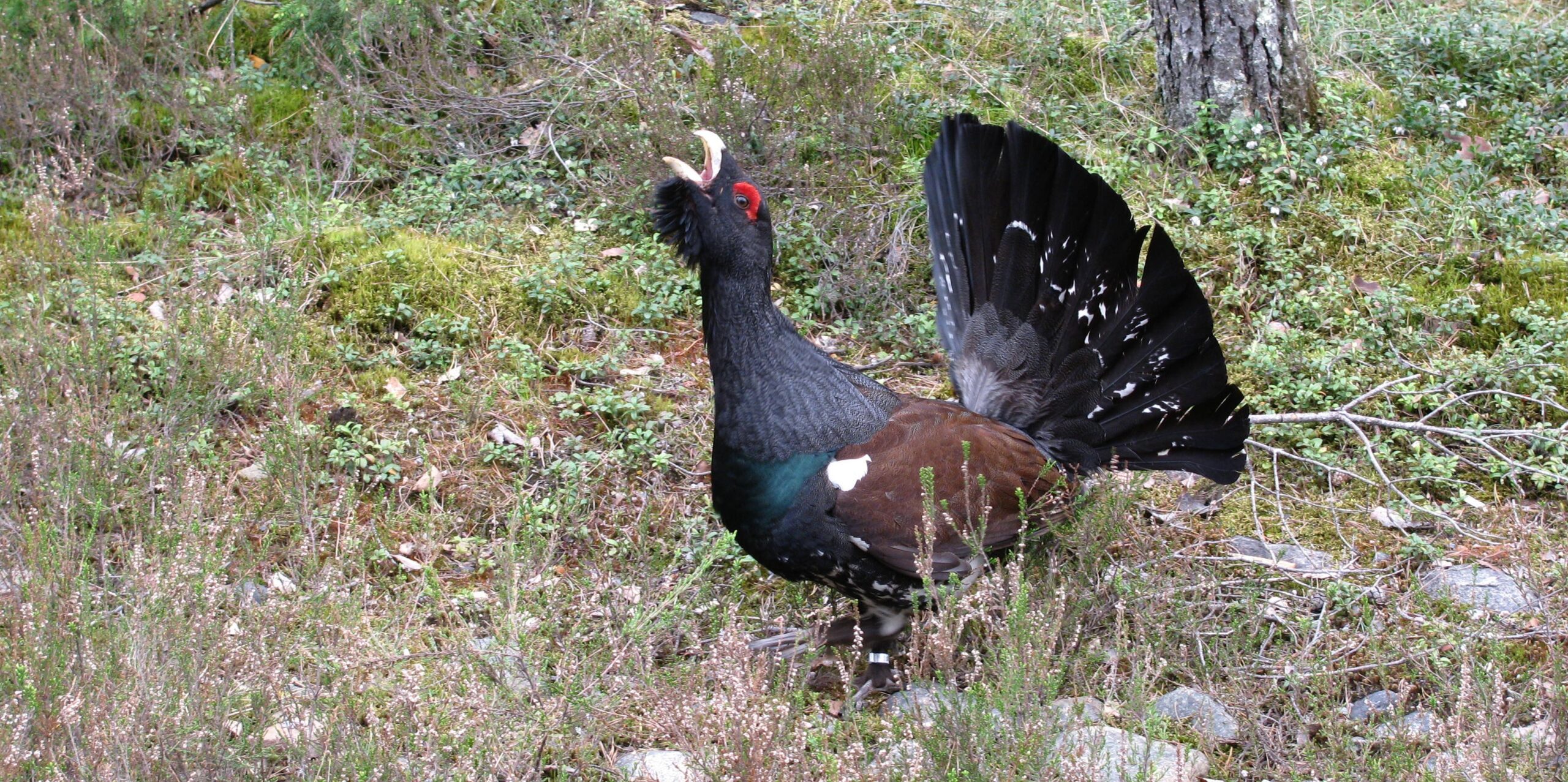Clearcutting chaos: A bumpy ride for Estonia’s conservation areas
by Carmen Kilvits (Estonian Green Movement), Farištamo Eller (Save Estonia’s Forests)
Rail Baltica, the ambitious railway project set to connect the Baltic states of Estonia, Latvia, and Lithuania as part of Europe’s modern rail network, promises to boost regional development and integration. However, despite assurances of habitat protection and compensation measures during the construction of Rail Baltica, recent revelations on clearcutting in protected areas have exposed longstanding issues with Estonian forests. The case also highlights the broader challenges faced by nature when economic development takes precedence and the need for proper environmental safeguards against economic interests.

Rail Baltica is a high-priority infrastructure project for the European Commission. The cost of constructing the Estonian section of Rail Baltica is estimated at around EUR 3 billion. However, there are doubts that it will be completed by the 2030 deadline. The EU has already invested EUR 650 million in the Estonian section, and an additional EUR 500 million is expected to be requested during the 2021–2027 funding period to complete the project.
The Rail Baltica project is partly financed (EUR 31.05 million) by the EU’s Recovery and Resilience Facility, specifically covering the construction of several viaducts. To meet the requirements of the Facility, a ‘do no significant harm’ assessment was conducted to ensure the project would not cause any undue environmental damage. The assessment was approved based on the understanding that mitigation measures would be implemented to minimise local impacts on nature. Subsequently, an environmental impact assessment was carried out during Rail Baltica’s planning phase. This second assessment did not identify any significant impacts, as the viaducts are not located within protected natural areas.
However, it appears that the ‘do no significant harm’ assessment was conducted using a ‘salami slicing’ approach, where individual sections were assessed in isolation without considering the cumulative impact of the project on Estonian ecosystems and the interconnectivity between habitats.
Dividing Estonia in half, the Rail Baltica track is taking a significant environmental toll as it traverses through the natural landscapes of Pärnu county in the south-western part of the country. One species in this area that is being particularly affected is the western capercaillie.

The capercaillie, the largest of all living grouse species, is sadly facing a decline in population. It also features on the International Union for Conservation of Nature (IUCN) Red List of Threatened Species. In Estonia, the capercaillie is also designated as a protected species. In Estonia it’s flagship species and indicator species, which shows how well our nature is doing.
Originally, there had been an agreement to protect capercaillie forest habitats as compensation for the environmental damage caused by the project. However, on 6 March 2024, it was revealed that Estonia’s State Forest Management Centre, with permission from the Environmental Board, a government agency operating under the Ministry of Climate, had already clearcut a large area of the forests designated for compensation.
Despite claims by the State Forest Management Centre and Environmental Board that the clearcutting was a ‘mistake’ due to the areas not having been registered in Estonia’s environmental register, the Estonian Chamber of Environmental Associations argues that this explanation is implausible. In a public letter to the Ministry of Climate, the State Forest Management Centre, and the Environmental Board, the Chamber points out that both institutions actively participated in selecting these very areas for compensation.
In August 2023, the Ministry of Regional Development and Agriculture began developing a capercaillie compensation package. This initiative involved environmental experts, the State Forest Management Centre, the Environmental Board, the Ministry of Climate, and the Estonian Environment Agency, a state authority administered by the Ministry of Climate. On 18 December 2023, the compensation plan was submitted for approval.
However, in January 2024, the State Forest Management Centre submitted hundreds of logging permits for protected areas totalling 1,107 hectares, of which 283 hectares had already been logged. This rapid logging suggests that the State Forest Management Centre intends to clear forests before implementing the planned protection measures.
Longstanding issues with Estonia’s protected forests
The EU’s Nature Directives – the Habitats Directive and the Birds Directive – are in place to protect the Natura 2000 network. Regrettably, since joining the EU in 2004, Estonia has not adhered to the Habitats Directive. As a result of the Estonian government’s ongoing violation of EU law, the European Commission initiated a 2021 infringement procedure against Estonia for the deforestation of Natura 2000 sites.
Compounding matters, a 2023 audit by the National Audit Office of Estonia found that the effects of clearcutting identified in the permit granting procedure were hampered by insufficient and unclear information, particularly with regard to data on surface areas in protected forests. Significantly, the audit emphasised that critical issues remain unresolved, including those raised in an earlier 2008 audit regarding the failure to uphold conservation values, prepare management plans, or conduct an impact assessment of clearcutting in protected forests.
Years later, Estonia is now facing mounting concerns about its forest habitats. Unfortunately, the Rail Baltica case is just one of many alarming cases highlighting rampant clearcutting and habitat destruction within these protected areas. In response to a November 2023 letter from the European Commission, the Environmental Board and the Ministry of Climate agreed that, starting from 1 March 2024, Board officials would conduct mandatory impact assessments before granting logging permits in Natura 2000 sites, as required by EU law.
But despite this agreement, the Board has since begun exploiting legal loopholes. During a public event on logging permits held on 22 February 2024, members of the Board gave forest owners advance warning about the upcoming impact assessments. This resulted in a sixfold spike in logging permit applications for the month of February rate. The Board then swiftly processed these applications in a likely attempt to clear the upcoming backlog.
To make matters worse, it was disclosed in March 2024 Agency had been overinflating official forest growth statistics for years. This means that, had the correct data been applied, critical restrictions on logging would have been in place much earlier.
Increased transparency and environmental safeguards needed
In response to the Estonian Chamber of Environmental Associations’ public letter, the Ministry of Climate, the State Forest Management Centre, and the Environmental Board has acknowledged the clearcutting carried out in the compensation areas as a regrettable mistake. They claim the areas were not yet protected due to imprecise legal guidelines regarding the initiation of protection procedures, which meant that critical actions were not halted in a timely manner during the planning phase. To prevent a similar situation from occurring in the future, they have committed to review and coordinate their future work processes. However, they also dispute the Chamber’s clearcutting figures, pointing to a discrepancy in data.
But Chamber contradict this narrative. Indeed, a presentation by the Board itself, featuring an analysis of the clearcutting carried out in protected areas, aligns with their own findings. During their meetings with Chamber, Board officials attributed the discrepancies to automated system errors even though they are ultimately responsible for overseeing the system.
Another point of contention is the complete lack of transparency surrounding the investigations, which officials claim have already begun. Accountability also remains elusive. While it is true that multiple authorities share responsibility for the situation, their joint response indicates that no one individual will be brought to task. In cases like this, greater transparency is required. The discovery of numerous shortcomings by non-governmental organisations underscores the need for the state to be more forthcoming about its actions.
In March 2024, Estonia’s Supreme Court affirmed the state’s duty to protect the environment. In an earlier decision, the Court ruled that institutions using automated decision-making systems are responsible for ensuring the accuracy and completeness of data generated by these systems, as well as compliance with legal norms. Yet, despite these rulings, the Environment Agency has still granted the State Forest Management Centre permission to log in a newly designated capercaillie conservation area.
The Chamber has expressed dissatisfaction with the lack of clear accountability in this clearcutting controversy. While Estonia’s Civil Service Act calls for disciplinary proceedings in these instances, to our knowledge none have been initiated thus far despite the repeated negligence displayed.
To bring about decisive action, the environmental organisation Save Estonia’s Forests recently filed a complaint with both the prosecutor’s office and the criminal police, demanding officials be held responsible. Bird conservation specialist Liis Keerberg of the Estonian Ornithological Society has drawn attention to the severe environmental damage caused by the unauthorised clearcutting, the substantial costs for the state, and the obliteration of vital capercaillie habitats. Another important matter to consider is that since the original compensation areas were designated as pristine habitats, a wider expanse of less quality land must now be conserved to achieve the same effect.
Lessons learned and what comes next
As things stand, we have more questions than answers. The process needs to be investigated impartially and transparently, and the officials responsible for this situation need to be held accountable. Most importantly, the environmental damage caused needs to be compensated. The increasing use of compensation measures to mitigate environmental damage in Estonia, for example, in the construction of renewable energy infrastructure, highlights the need for a clearer and more transparent planning process for compensation areas.
Encouragingly, the Ministry of Climate has promised to add the necessary regulations to its proposals for amendments to the Nature Conservation Act currently being prepared. But the economic damage incurred by the delays in the construction of the Rail Baltica project still needs to be clarified. After all, the economic burden of these ‘mistakes’ cannot always be shouldered by the Estonian taxpayer.
To ensure that projects financed by EU funds actually follow the ‘do no significant harm’ principle, the European Commission should look at projects they finance in their entirety and assess their cumulative impact. Despite the fact that the Recovery and Resilience Facility only finances the viaducts of Rail Baltica, the European Commission remains closely connected with a broader project that is wreaking havoc on Estonia’s precious ecosystems. In future, the precautionary approach should always be taken if there is any doubt that EU funding will contribute either directly or indirectly to environmental harm.
